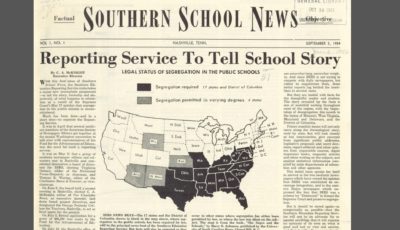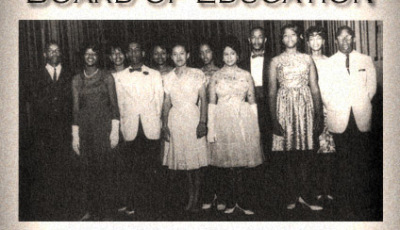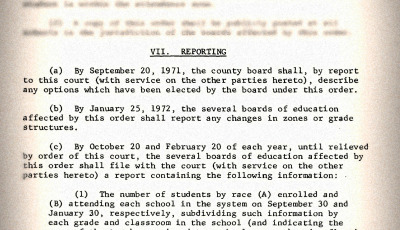The Alabama Pupil Placement Law: Circa 1955
 Every now and then, while doing research, a discovery is made that bears exposure. This is one of those discoveries.
Every now and then, while doing research, a discovery is made that bears exposure. This is one of those discoveries.
For those who doubt the resolve of the elected members of the Alabama legislature (all Democrats at the time, remember) to keep our schools segregated after the Brown v. Board of Education of Topeka (I and II) decisions in May 1954 and May 1955, you really need to read this law.
The Alabama legislature passed the law, firmly setting the rules allowing school boards to discriminate in the placement of African-American and white children, less than three months after the U.S. Supreme Court’s Brown II decision, on August 3, 1955…without the approval of Governor James “Big Jim” Folsom, Sr.
This is the Alabama Pupil Placement Law. It was hailed as a model for other southern states as a way to constitutionally avoid integration of our schools.
It carved in stone seventeen parameters that school boards could use to place students at schools, i.e., deny African-American students transfers to white schools.
These parameters were:
- Available room and teaching capacity in the various schools
- Availability of transportation facilities
- The effect of the admission of new pupils upon established or proposed academic programs
- The suitability of established curricula for particular pupils
- The adequacy of the pupil’s academic preparation for admission to a particular school and curriculum
- The scholastic aptitude and relative intelligence or mental energy or ability of the pupil
- The psychological qualification of the pupil for the type of teaching and associations involved
- The effect of admission of the pupil upon the academic progress of other students in a particular school or facility thereof
- The effect of admission upon prevailing academic standards at a particular school
- The psychological effect upon the pupil of attendance at a particular school
- The possibility or threat of friction or disorder among pupils or others
- The possibility of breaches of the peace or ill will or economic retaliation within the community
- The home environment of the pupil
- The maintenance or severance of established social and psychological relationships with other pupils and with teachers
- The choice and interests of the pupil
- The morals, conduct, health and personal standards of the pupil
- The request or consent of parents or guardians and the reasons assigned therefor.
For now, all you need to do it read it. Read every word.
And while you’re reading it, call to mind the various conversations around why some children succeed in school while others don’t.
Call to mind the reasons the failures of some of our children appear to be acceptable, even today.
Alabama School Placement Law – Act 201 of the 1955 Alabama Legislature
Today marks the 52nd anniversary of this speech by former Alabama Governor George Wallace. Keep in mind that this speech was made nearly nine years after the 1954 Brown v. Board of Education decision.
Stay tuned for more about the Alabama Pupil Placement Law.
There are some eerie similarities to other education reform efforts happening in Alabama.
And with the Alabama legislature set to open its session in March, a history lesson may be in order.
For Those Who Want to Read Ahead
The 1961 U.S. Commission on Civil Rights Report, Book 2: Education
New School Laws for Alabama – November 1959 – St. Petersburg Independent, Florida – a preview of the fancy new ways the legislature managed to stay ahead of integration requirements. Florida was impressed.
The South’s Pupil Placement Laws – Newest Weapon Against Integration – October 1, 1960





